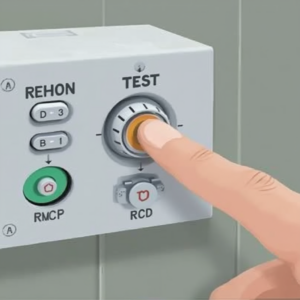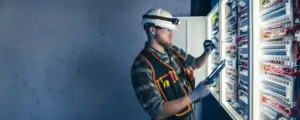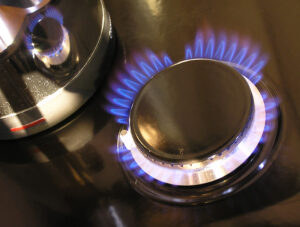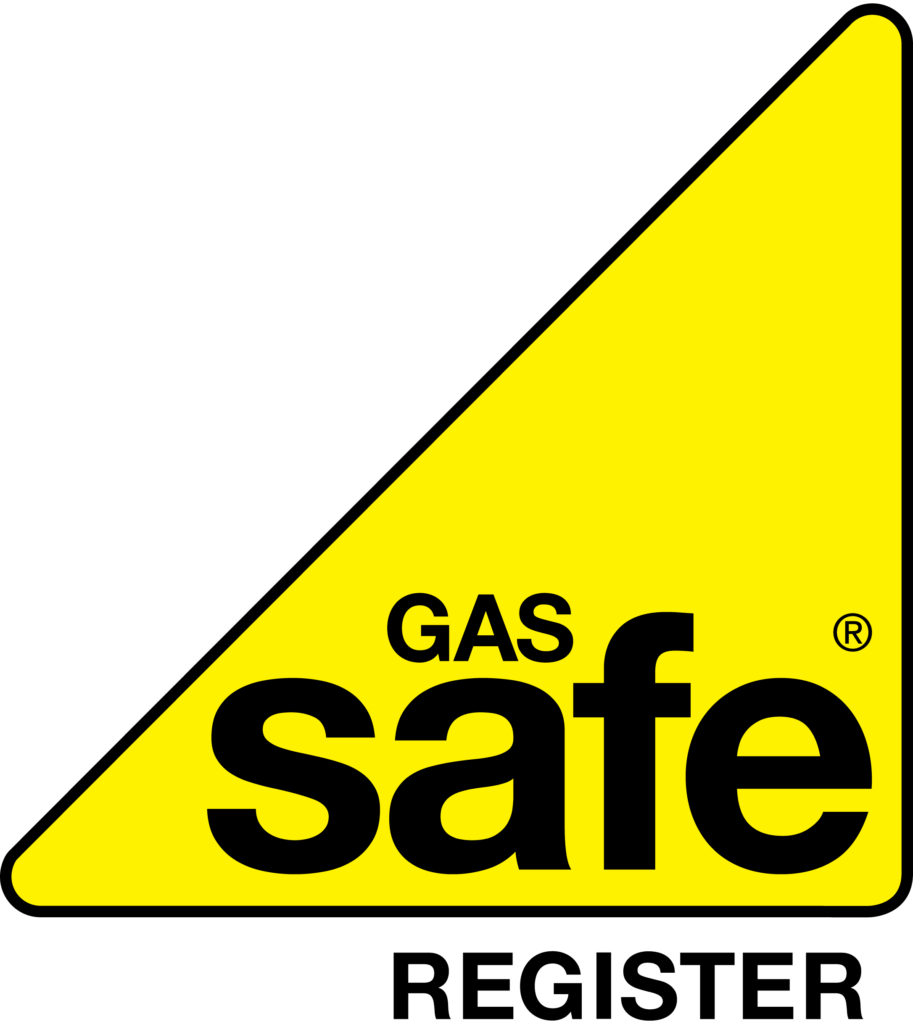Introduction
Moving into a new home is an exciting milestone, but safety should always come first. Many homeowners overlook critical safety steps in the rush to unpack, leaving them vulnerable to hidden hazards like faulty wiring, gas leaks, or outdated locks. This comprehensive safety checklist covers everything you need to do before settling in, from gas safety inspections to electrical system checks. Let’s ensure your new home is a safe haven for you and your family.

Table of Contents
Toggle1. Change the Locks on Your New House

Why It’s Critical:
When you buy a home, you don’t know who else has keys—contractors, neighbors, or even the previous owners. Changing locks on a new house eliminates this risk and is the #1 step for securing your property.
Steps to Change Locks:
- Replace All Exterior Locks: Front doors, back doors, garage doors, and shed locks.
- Upgrade to Smart Locks: Keyless entry systems like Yale or August offer enhanced security and remote access.
- Re-Key Existing Locks: A cheaper alternative if locks are high-quality. A locksmith can re-pin them for £50–£100.
Pro Tip:
Install deadbolts with BS 3621 certification for maximum security. Avoid “lock bumping” vulnerabilities by choosing bump-resistant locks.
- For landlord-specific lock safety, see our guide to Landlord Gas Safety Certificates.
2. Schedule a Gas Safety Inspection
What is a Gas Safety Inspection?
A gas safety inspection is a legal requirement for landlords but highly recommended for homeowners. Certified engineers from the Gas Safe Register check appliances, flues, and fittings to prevent carbon monoxide leaks or explosions.
What’s Checked?
- Boilers and Heaters: Ensure proper ventilation and no gas leaks.
- Gas Cookers and Ovens: Test for safe ignition and flame stability.
- Gas Fireplaces: Inspect flues and chimney integrity.
Why You Need It:
- Identifies carbon monoxide risks (a silent killer).
- Ensures compliance with UK Gas Safety Regulations.
- Provides peace of mind for your family.
- Learn how to prepare for a gas safety check to avoid delays.
3. Electrical System Safety Check

Why It Matters:
Faulty wiring causes over 20,000 UK house fires annually. A home electrical safety inspection ensures your system meets the 18th Edition Wiring Regulations (BS 7671).
What to Do:
- Locate the Consumer Unit: Label each circuit for easy emergency shutdowns.
- Test RCDs (Residual Current Devices): Press “Test” buttons to ensure they trip correctly.
- Inspect for DIY Wiring: Previous owners may have bypassed safety standards.
When to Call an Electrician:
- Flickering lights or buzzing outlets.
- No RCD protection in wet areas (bathrooms, kitchens).
- For professional inspections, book an EICR Certificate.
4. Plumbing and Gas Line Inspections
Gas Safety First:
- Test for Gas Leaks: Apply soapy water to connections. Bubbles indicate leaks.
- Install Carbon Monoxide Detectors: Place near boilers and bedrooms.
- Book a Boiler Service: Ensure efficiency and safety with a Gas Boiler Service.
- Check Water Pressure: Low pressure may indicate pipe blockages.
- Inspect for Lead Pipes: Common in pre-1970 homes. Replace with copper or PVC.
- The NHS explains carbon monoxide poisoning symptoms.
5. Indoor Air Quality & Asbestos Checks
Why Air Quality Matters:
Poor air quality triggers allergies and respiratory issues. New homes often have dust, mold, or VOCs from paint and carpets.
Steps to Clean Air:
- Replace HVAC Filters: Use HEPA filters to trap allergens.
- Test for Radon: Use a UK Radon DIY kit (£40–£60).
Asbestos (Pre-2000 Homes):
- Common in: Insulation, floor tiles, and textured ceilings.
- Dangers: Asbestos fibres cause lung cancer when inhaled.
- Professional Abatement Required: Never DIY!
- For asbestos testing, explore Residential Asbestos Services.
6. Fire Safety Upgrades
Essentials for Every Home:

- Smoke Detectors: Install on every floor and inside bedrooms. Test monthly.
- Fire Extinguishers: Place in the kitchen, garage, and near fireplaces.
- Escape Plan: Map two exits from each room and practice drills.
- Fire Safety England provides escape plan templates.
7. Childproofing and Window Safety
Childproofing Tips:
- Anchor Furniture: Secure bookshelves and TVs to walls.
- Install Safety Gates: Block stairs and hazardous areas.
Window Safety Compliance:
- Window Guards: Prevent falls in homes with young kids.
- Tempered Glass: Ensure windows meet UK Building Regulations.
8. PAT Testing for Appliances
What is PAT Testing?
Portable Appliance Testing (PAT) ensures electrical devices like kettles, microwaves, and lamps are safe to use.
Why It’s Important:
- Reduces fire and electric shock risks.
- Landlords must test appliances annually under Electrical Safety Standards.
- Book a PAT Testing Certificate.
9. Deep Cleaning and Duct Maintenance
Steps to a Healthy Home:
- Steam Clean Carpets: Remove allergens and stains.
- Disinfect Surfaces: Use EPA-approved cleaners in kitchens and bathrooms.
- Clean Air Ducts: Hire a pro to remove dust and debris (£300–£500).
- EPA Guidelines on indoor air quality.
10. Secure Valuables and Documents
Protect Your Investment:
- Install a Safe: Store passports, deeds, and jewellery.
- Digitize Documents: Use encrypted cloud storage like Google Drive or Dropbox.

FAQs: Safety Checklist for New Homeowners
1. Why is changing locks on a new house necessary?
Even if the previous owner hands over all keys, you can’t be sure copies weren’t shared with contractors, neighbors, or family members. Changing locks on a new house ensures only you and trusted individuals have access. For maximum security, upgrade to smart locks or ANSI Grade 1 deadbolts.
2. How often should I schedule a home safety inspection?
For homeowners, a home safety inspection is recommended every 2–3 years. However, schedule one immediately after buying a new house to identify hidden hazards like faulty wiring or gas leaks. Landlords must conduct annual inspections for rental properties.
3. What does a home electrical safety inspection include?
A licensed electrician will check wiring, circuit breakers, GFCI outlets, and grounding systems. They’ll also test for overloaded circuits and outdated aluminum wiring (common in older homes). This prevents fire risks and ensures compliance with modern safety standards.
4. Are pre-move-in checklists really necessary?
Yes! A pre-move-in checklist helps you address safety issues before unpacking. It covers critical tasks like changing locks, inspecting plumbing, and testing smoke detectors, ensuring your home is move-in ready and hazard-free.
5. How do I check for lead paint in my new home?
Homes built before 1978 likely contain lead paint. Use a DIY swab test kit (10–10–30) or hire an EPA-certified inspector. If lead is found, professionals must safely remove it to avoid toxic exposure.
6. What are the most important safety tips when moving into a new house?
- Change all exterior locks.
- Test smoke and carbon monoxide detectors.
- Inspect electrical systems and plumbing.
- Clean air ducts and replace HVAC filters.
- Childproof windows and stairs.
7. Can I perform a home safety inspection myself?
While basic checks (e.g., testing detectors) can be DIY, always hire professionals for gas safety inspections, electrical evaluations, and mold testing. Certified inspectors have the tools and expertise to spot hidden risks.
8. How much does a home safety inspection cost?
A full home safety inspection typically costs 300–300–500, depending on home size and location. Specialized checks (e.g., radon or asbestos testing) may add 100–100–200.
9. What should I do if I find mold during my pre-move-in cleaning?
Small mold patches can be scrubbed with vinegar or hydrogen peroxide. For large infestations, hire a mold remediation specialist. Ensure the source of moisture (e.g., leaks) is fixed to prevent regrowth.
10. How can I improve window safety compliance in my new house?
- Install window guards if you have young children.
- Ensure windows open easily for emergency exits.
- Replace cracked glass with tempered safety glass.
Conclusion
Your new home should be a sanctuary, not a safety hazard. By following this pre-move-in checklist—from gas safety inspections to PAT testing—you’ll protect your family and investment. Don’t cut corners: hire certified professionals for electrical, plumbing, and asbestos checks.
Need a Gas Safety Inspection?
Landlord Safety Certificate offers certified gas and electrical inspections across the UK. Book your inspection today or call 020 3397 8277 for a quote.







